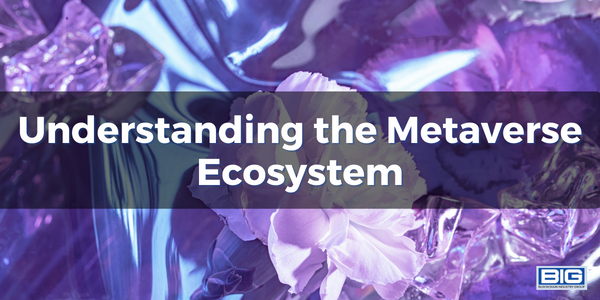
The metaverse is a rapidly growing concept in the world of technology, and its potential to change the way we live and interact with each other is truly exciting. However, understanding the different components of the metaverse and how they fit together can be challenging. In this article, we will explore the various components of the metaverse ecosystem, including virtual reality and augmented reality, social virtual worlds, virtual economies and cryptocurrencies, and decentralized identity and ownership.
Components of the Metaverse
The metaverse refers to a shared virtual space where people can interact with each other and digital experiences in a way that feels real. It is a convergence of virtual reality, augmented reality, and other digital technologies that are designed to create a seamless and immersive experience for users. The metaverse is a complex ecosystem that includes a range of different components, including virtual worlds, social networks, games, and other digital experiences.
Virtual Reality and Augmented Reality
Virtual reality and augmented reality are two of the key components of the metaverse ecosystem. Virtual reality (VR) is a computer-generated simulation of a three-dimensional environment that a user can interact with using a VR headset. VR is often used for gaming and entertainment, but it also has potential applications in education, training, and even therapy. Augmented reality (AR) is a technology that overlays digital information on the real world, creating a hybrid experience that blends the physical and digital. AR is often used in applications such as gaming, education, and shopping.
Social Virtual Worlds
Social virtual worlds are digital environments where people can interact with each other and experience digital content. These virtual worlds can range from simple chat rooms to more complex environments where users can engage in a variety of activities, such as playing games, socializing, or shopping. Social virtual worlds are a key component of the metaverse because they allow people to connect and collaborate in new and exciting ways.
Virtual Economies and Cryptocurrencies
Virtual economies and cryptocurrencies are an important part of the metaverse ecosystem. Virtual economies are economies within virtual worlds, where users can buy and sell digital goods and services using virtual currency. Cryptocurrencies are digital assets that use cryptography to secure transactions and control the creation of new units. Cryptocurrencies have the potential to revolutionize the virtual economy by providing a secure and decentralized way to exchange value within the metaverse.
Comparing and Contrasting: Microsoft HoloLens, HTC Vive, and Oculus Quest
—
Decentraland: Groundbreaking Digital Frontier and Major Partnerships
—
Fortnite: Redefining Gaming and Forging the Digital Frontier
Decentralized Identity and Ownership
Decentralized identity and ownership are important components of the metaverse because they allow users to control their own data and assets within virtual environments. Decentralized identity refers to a system where users have control over their own personal information and can use it to authenticate themselves across different virtual environments. Decentralized ownership refers to a system where users have control over their own digital assets, such as virtual currency or digital collectibles, and can use them in different virtual environments.
In conclusion, the metaverse is a complex and rapidly growing ecosystem that includes a range of different components, including virtual reality and augmented reality, social virtual worlds, virtual economies and cryptocurrencies, and decentralized identity and ownership. Understanding these components is crucial to fully understanding the potential of the metaverse and the exciting new opportunities it provides. As the metaverse continues to evolve and mature, it is likely to become an increasingly important part of our lives, changing the way we live, work, and interact with each other.



